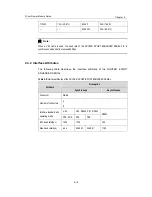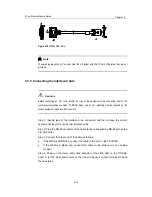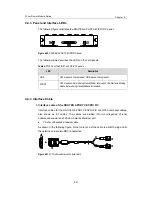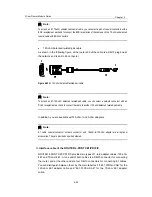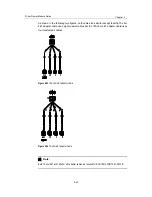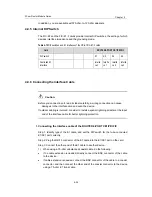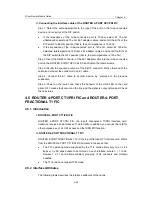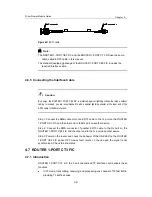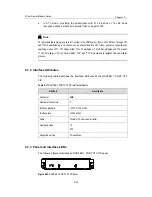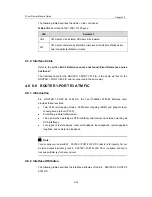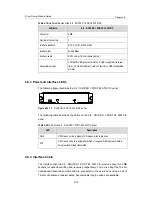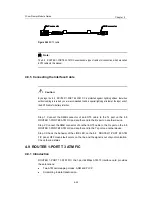
3Com Router Module Guide
Chapter 4
4-26
II. Connecting the interface cable of the ROUTER 4-PORT CE1/PRI FIC
Step 1: Select the cable appropriate to the type of the port on the to-be-connected
device, and correctly set the DIP switch.
z
If the impedance of the to-be-connected port is 75-ohm, select E1 75-ohm
unbalanced coaxial and 75-ohm 4E1 adapter cables, and set all the BITs of the
DIP switch to the ON position (that is, the port impedance is 75-ohm).
z
If the impedance of the to-be-connected port is 120-ohm, select E1 120-ohm
balanced twisted-pair and 120-ohm 4E1 adapter cables, and set all the BITs of
the DIP switch to the OFF position (that is, the port impedance is 120-ohm).
Step 2: Insert the DB-25 connector of the 4E1 adapter cable into the to-be-connected
port on the ROUTER 4-PORT CE1/PRI FIC and tighten the thumbscrews.
Step 3: Identify the sequence number of the DB-15 connector at the other end of the
cable, and connect the connector to an E1 cable.
Step 4: Connect the E1 cable to another device, by reference to the previous
subsection.
Step 5: Power on the router, and check the behavior of the LINK LED on the card
panel: OFF means fault occurs on the line and the signal is not synchronized. Check
the line status.
4.5 ROUTER 4-PORT CT1/PRI FIC and ROUTER 4-PORT
FRACTIONAL T1 FIC
4.5.1 Introduction
I. ROUTER 4-PORT CT1/PRI FIC
ROUTER 4-PORT CT1/PRI FIC, the 4-port channelized T1/PRI interface card,
transmits, receives, and processes T1 data traffic. In addition, you can use the card for
other purposes, such as CE1 access and the ISDN PRI function.
II. ROUTER 4-PORT FRACTIONAL T1 FIC
ROUTER 4-PORT FRACTIONAL T1 FIC, the 4-port fractional T1 interface card, differs
from the ROUTER 4-PORT CT1/PRI FIC primarily in the sense that:
z
The FT1 operating mode supported by the T1-F cards allows only one n x 64
kbps or n x 56 kbps bundle to be formed on each interface, where n = 1 to 24.
However, a T1 card allows arbitrary grouping of 24 channels and multiple
bundles.
z
The T1 cards do not support PRI mode.
4.5.2 Interface Attributes
The following table describes the interface attributes of the cards.



